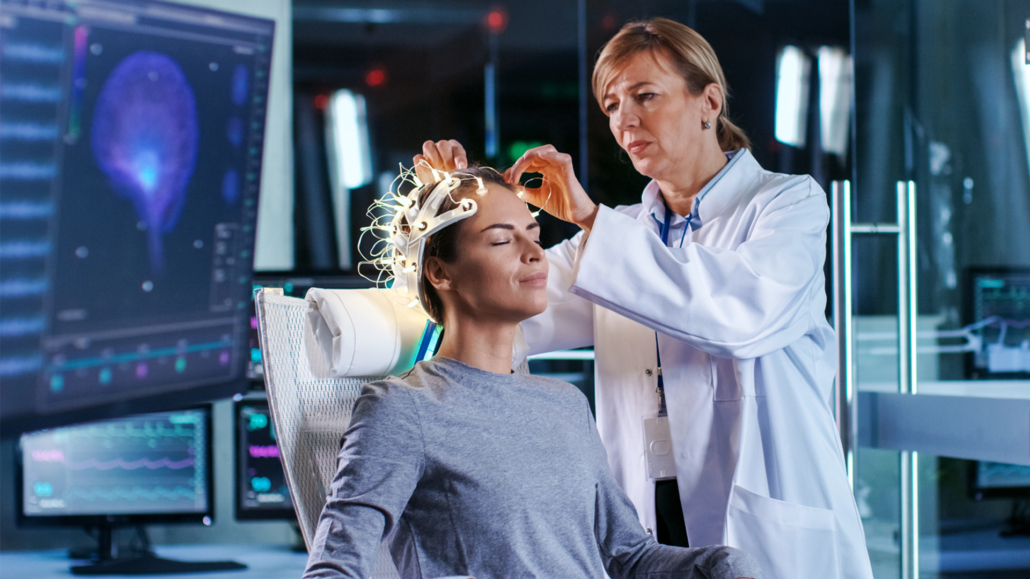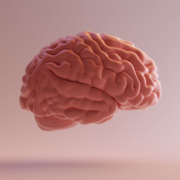What is Neurofeedback?
What if retraining the brain to alleviate anxiety, depression and attention-deficit hyperactivity disorder (ADHD)—without drugs—was as easy as staring at a screen? Perhaps it sounds too good to be true, not to mention counterintuitive, but the non-invasive therapy known as neurofeedback has been re-shaping brain-wave activity for decades. And thanks to modern technology, neurofeedback can now be performed from the comfort of home.
What is Neurofeedback Therapy?
Hooking up electrodes to the brain in order to influence neuronal activity doesn’t always conjure images of pleasant, non-invasive therapy. Not all that long ago, people with violent tendencies were administered electro-shock therapy to transform them into docile, law-abiding citizens. But retraining the brain to improve human behavior doesn’t have to resemble a scene from A Clockwork Orange.
In fact, neurofeedback can be as gentle as a purring kitten and promises to change behavior for the better without pharmaceutical intervention. By measuring electroencephalography (EEG) brainwave patterns and retraining those electric impulses, neurofeedback therapy may help people dealing with addiction, mood- and concentration disorders and more.
How Does Neurotherapy Work?
Neurofeedback therapy analyzes how different sections of the brain communicate with each other. In people with mood disorders, the activity of this “cross-sectional” brain communication is overactive; there is too much communication between different sections of the brain. This causes neurons to fire wildly.
In a typical neurofeedback therapy session, three components are commonly used to entrain the brain: light, sound, and vibration. By experiencing one or more of these components, a recipient of neurofeedback experiences short bursts of dopamine in the prefrontal cortex.
This rush of dopamine explains why casinos in Las Vegas attract gamblers with flashing lights. But in people who struggle with addiction or mood disorders, the dopamine-reward response is on constant overdrive. By stimulating the prefrontal cortex with short bursts of dopamine, however, neurofeedback therapy may retrain the brain to recognize and respond to a pleasant association, and hold that particular brain-wave activity.
How Long Does Neurofeedback Therapy Take To Work?
Reshaping brain activity with classic neurofeedback therapy requires supervision by a trained professional such as a psychologist. Each session typically lasts 20-30 minutes. Approximately 20 training sessions, 2 or 3 times a week may be required to successfully retrain the brain for the long term.
If successful, neurofeedback therapy results in better-regulated cross-sectional brain communication. This yields a more balanced mood and calm, focused energy. The therapy does not “force” your brain to achieve these more desirable states. Rather, it teaches the brain to reset and hold on to improved cross-sectional communication patterns.
For those who don’t have the patience or time to work with a neurofeedback therapist, at-home wearable devices have recently made the therapy accessible to the masses—provided you can pay at least a few hundred dollars for one.
These devices, some of which pair with “the future is now” virtual reality technology, promise faster results. But first, let’s go back in time and learn about the origins of neurofeedback therapy.
The History of Neurofeedback
Neurofeedback is roughly a century old. According to Myndlift, the origins of the therapy date back to the 1920s, when a German psychiatrist named Hans Berger created the first EEG device with technology still familiar to this day. Berger is credited with being the first person to attach electrodes to the human head in order to measure electrical brain currents.
It wasn’t until a few decades later that measuring electrical brain activity was conducted for the sake of altering brain-wave patterns. That innovation was pioneered in the mid-20th century by Dr. Joseph Kamiya at the University of Chicago and Dr. Barry Sterman at UCLA.
The technique to control brain waves by introducing simple rewards was perfected by Dr. Kamiya. Not having the luxury of smart screens to work with, Dr. Kamiya stimulated alpha-wave activity with a primitive technique measured by today’s standards: ringing a bell.
Meanwhile, Dr. Sterman’s work on reshaping brain activity took on a more feline nature. He discovered that brain-wave activity could be reshaped in cats by rewarding them with food. When the cats were given food in the lab, the brain activity always registered within a small range of frequency (12-15 Hz if you’re keeping brain-wave activity score at home). Dr. Sterman coined this frequency “Sensorimotor Rhythm” or SMR.
While conducting experiments for NASA a few years after conducting his first feline experiments, Dr. Sterman was researching the association between rocket fuel exposure and seizures. Using cats once again as his guinea pigs, Dr. Sterman discovered that the cats who underwent SMR (neurofeedback) training was much less likely to suffer a seizure than cats who were not subjected to the training.
Neurofeedback For Epilepsy And ADHD
The unofficial godfather of neurofeedback therapy then applied this technique to people with epilepsy. Dr. Sterman’s research resulted in a majority of test subjects with epilepsy experiencing a significant reduction in seizure incidences. In some cases, patients who underwent neurofeedback training became completely free of seizures.
One of the first researchers to conduct neurofeedback therapy on children and adults with ADHD was Dr. Joel Lubar, beginning in the 1970s. Since then, according to Myndlift, “a significant body of research on the efficacy of neurofeedback therapy for the treatment of ADHD has emerged, with many studies showing significant and long-term improvements after neurofeedback treatment.”
The application of neurofeedback therapy is not limited to mood and focus disorders. These days, the technique is used to treat migraines and chronic pain.
What is the difference between neurofeedback and binaural beats?
You certainly don’t have to visit a psychologist or trained neurofeedback therapist and have electrodes strapped to your brain to entrain your brain waves. You can use portable entrainment devices (PEDs) such as audio-visual entrainment, cranio-electrical stimulation, smart glasses, and binaural beats.
PEDs won’t show you a printout of your brainwave activity nor do they teach your brain to change its pattern for the long haul. Rather, these home devices allow for users a quick, band-aid approach to feeling more relaxed.
Although the effects of PEDs like binaural beats are short-lived, the results are often immediate. Moreover, listening to binaural beats can encourage the brain to shift into more relaxed states with repeated use. However, for longer-lasting brain entrainment, neurofeedback therapy is considered superior to binaural beats and other forms of entrainment devices.

Virtual Reality & Neurofeedback
The future of neurofeedback therapy is now, thanks to virtual reality (VR) apps and devices such as Muse, Oculus, and Halo. With this 21st century technology, brain-wave states that mirror monks in meditation can be achieved with just a smartphone app and a wireless headset.
Everything that we think and feel is predicated upon the activity level of billions and billions of neurons in the brain. Whether it’s through the old-fashioned method of strapping electrodes to the noggin or by using virtual reality devices, it’s nice to know that the century-old therapy known as neurofeedback may help us retrain our brain to help us feel more calm, cool, and collected in a chaotic world.
Disclaimer: The statements made in this article have not been evaluated by the Food and Drug Administration. Any products or treatments mentioned are not intended to diagnose, treat, cure, or prevent any disease. Please consult a licensed medical practitioner for medical advice.
At Innovative Medicine, we believe in transparency. We want you to know that we may participate in affiliate advertising programs pertaining to products mentioned herein.
See how we can help you restore complete health of body, mind & spirit.
Join our mailing list and receive exclusive offers + information!







Leave a Reply
Want to join the discussion?Feel free to contribute!